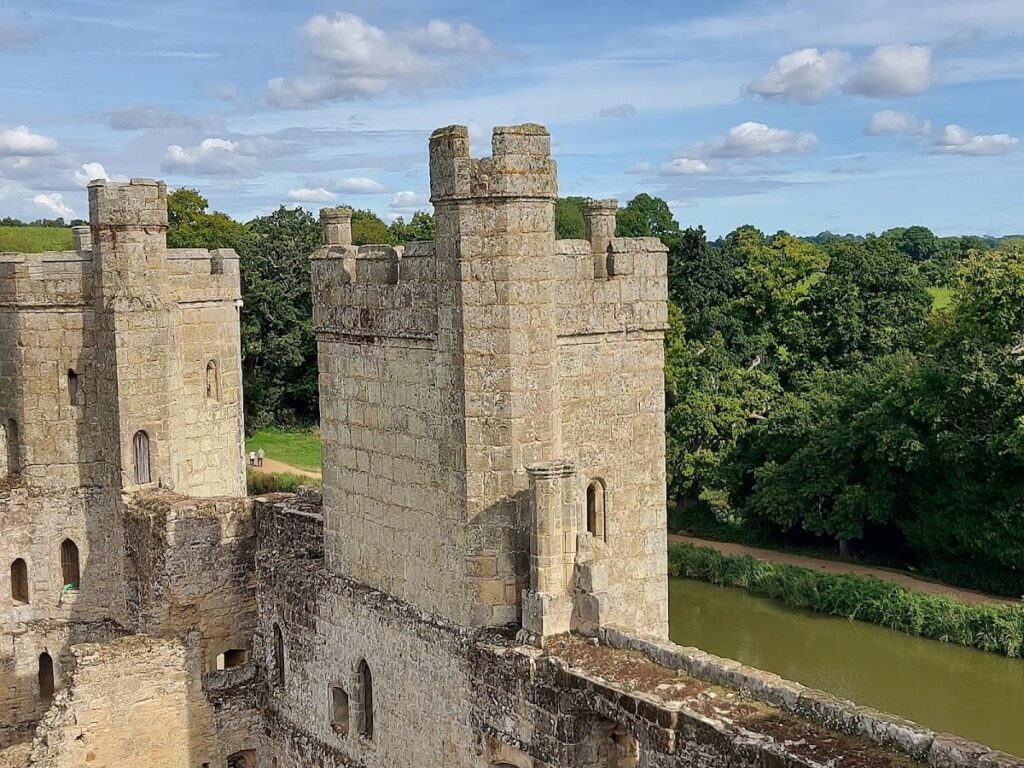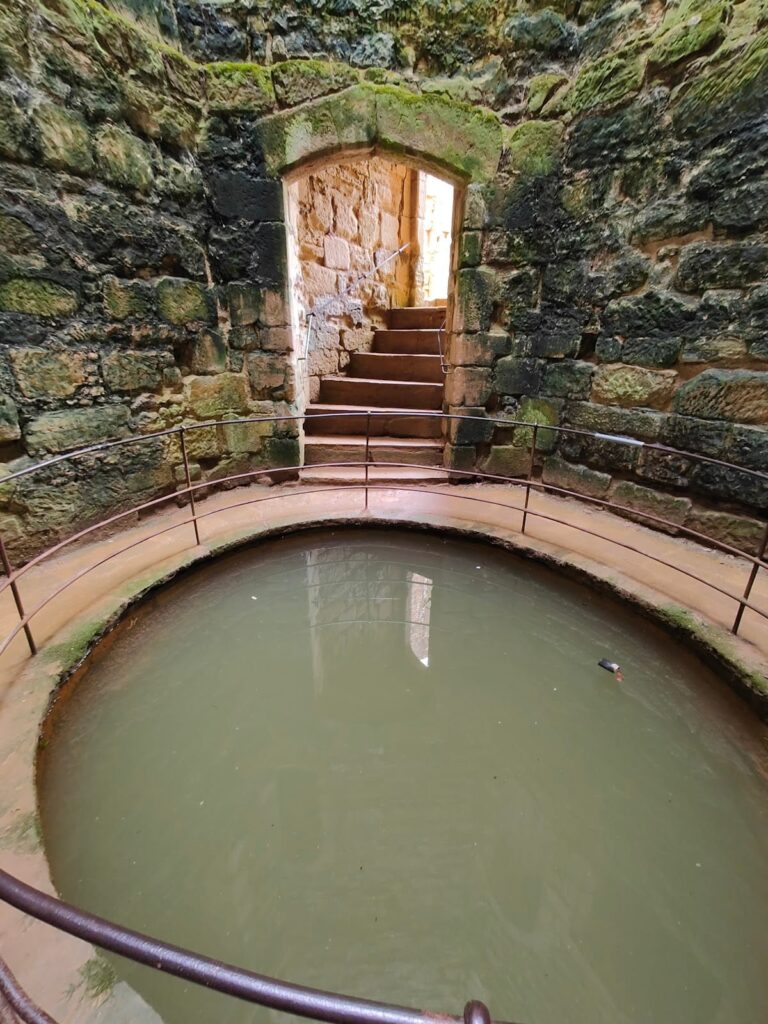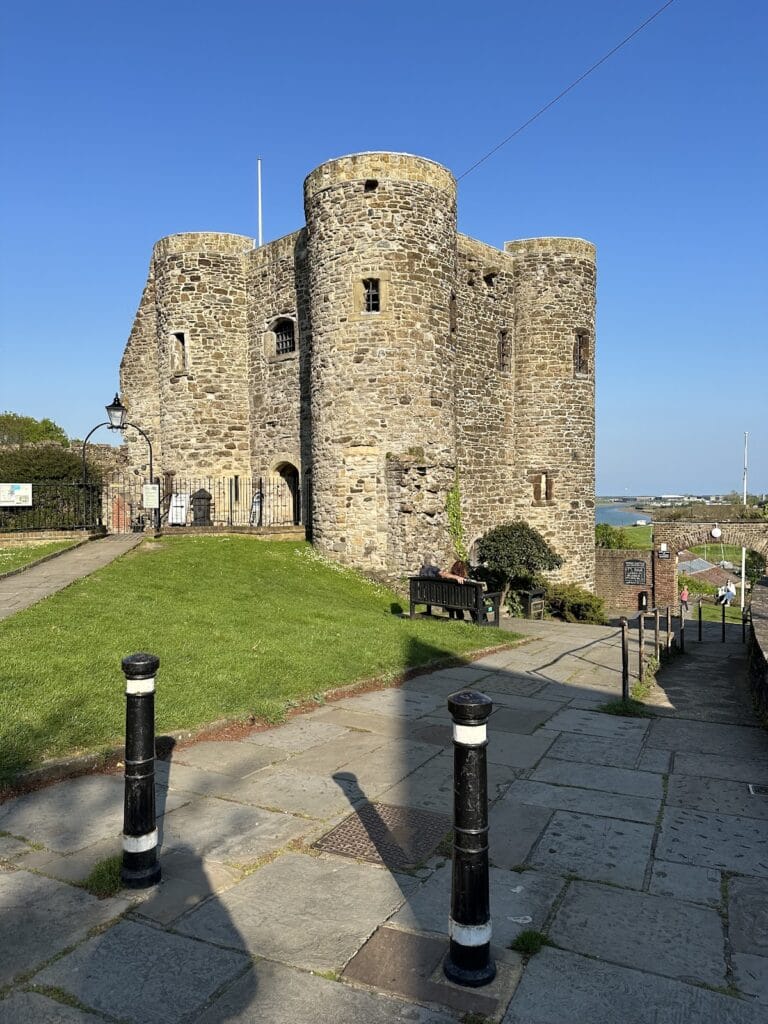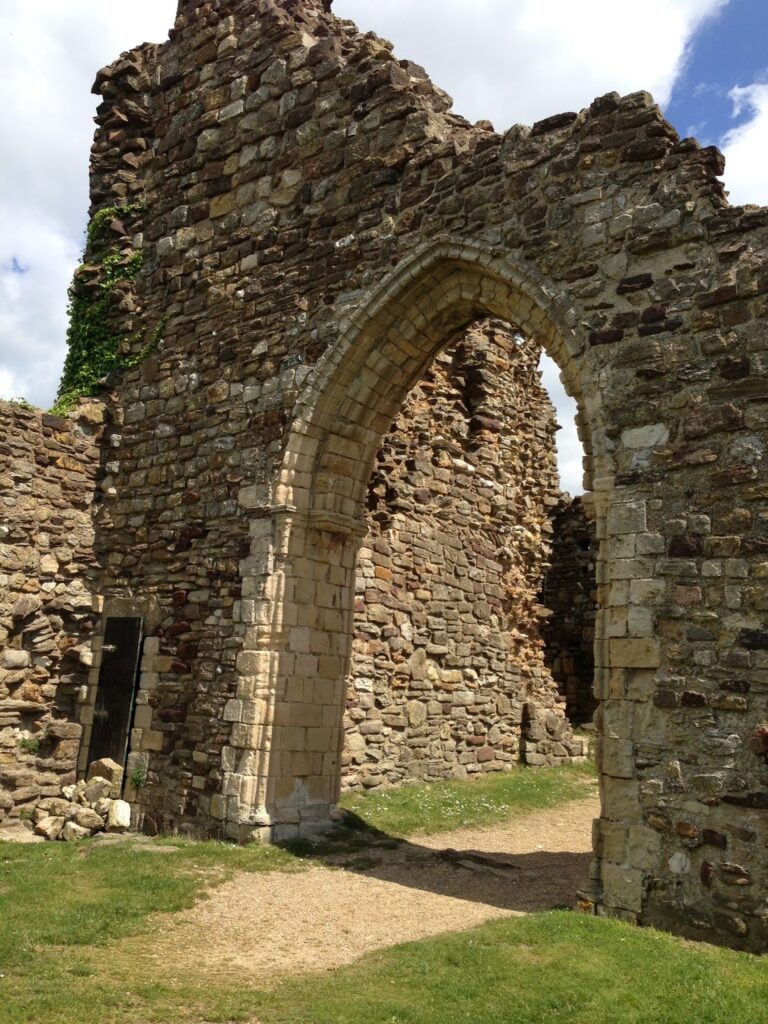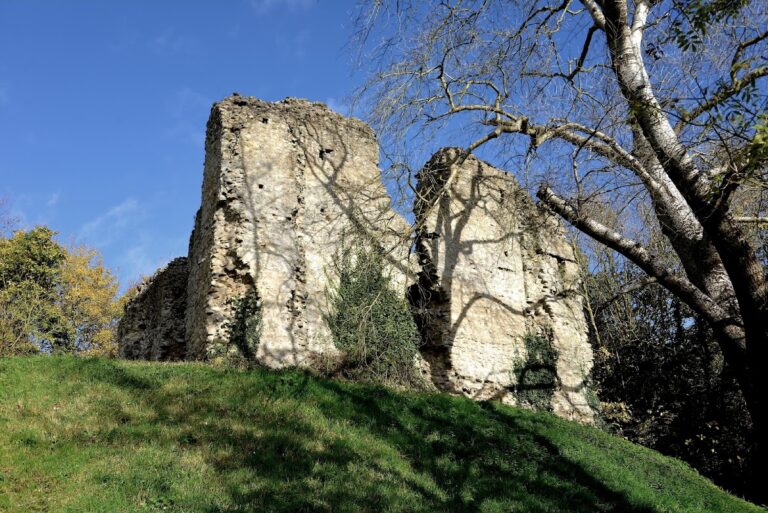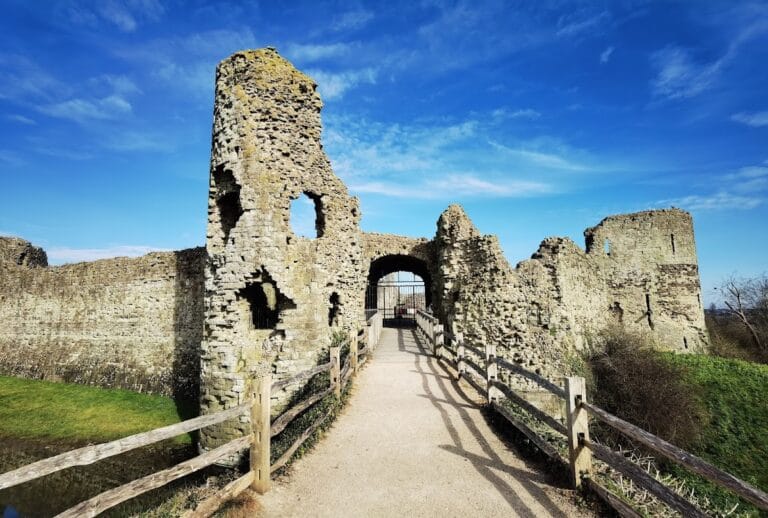Bodiam Castle: A Medieval Fortress in East Sussex, England
Visitor Information
Google Rating: 4.7
Popularity: Medium
Google Maps: View on Google Maps
Official Website: www.nationaltrust.org.uk
Country: United Kingdom
Civilization: Medieval European
Remains: Military
History
Bodiam Castle stands in Bodiam, near Robertsbridge in East Sussex, England. It was built in 1385 by Sir Edward Dalyngrigge, a former knight of King Edward III. Dalyngrigge received permission from King Richard II to construct the castle as a defense against a possible French invasion during the Hundred Years’ War. Unlike many castles built on existing manors, Bodiam was erected on unused land, funded by Dalyngrigge’s earnings as a mercenary in France. The castle became the main residence and administrative center for the Dalyngrigge family estate.
The castle remained in the Dalyngrigge family for several generations before passing by marriage to the Lewknor family. During the Wars of the Roses, Sir Thomas Lewknor supported the Lancastrian cause. When Richard III took the throne in 1483, Bodiam Castle was besieged and surrendered with little resistance. The castle was confiscated but later restored to the Lewknors by Henry VII after the Lancastrian victory. Ownership continued through the 16th and 17th centuries, though the castle’s specific use during this time is not clearly documented.
By the time of the English Civil War in 1641, the castle was owned by John Tufton, a Royalist supporter. Tufton sold Bodiam to pay fines imposed by Parliament. Soon after, the castle was abandoned and fell into ruin, becoming a picturesque relic of the medieval past. In 1829, John Fuller purchased the castle and began partial restoration. Later owners, including George Cubitt, 1st Baron Ashcombe, and Lord Curzon, undertook further restoration efforts.
After Lord Curzon’s death in 1925, Bodiam Castle was given to the National Trust. It has since been preserved and studied through archaeological excavations in the 1930s and 1970s. The castle is recognized as a Grade I listed building and a scheduled monument of national and international importance.
Remains
Bodiam Castle is a roughly square stone fortress built in the 14th century, featuring a central courtyard surrounded by buildings along the curtain walls. It lacks a central keep, a common feature in earlier castles. The four corners each have round towers, with additional square towers on the south, east, and west walls. The main northern gatehouse is three stories tall with twin towers, standing higher than the two-story curtain walls and internal buildings.
The castle is encircled by a rectangular water-filled moat, averaging 1.5 meters deep and reaching 2.1 meters at the southeast corner. The moat is fed by several springs, some located within the moat itself, which made drainage difficult. Rather than serving as a strong defensive barrier, the moat was designed to enhance the castle’s impressive appearance. Access was provided by two wooden bridges crossing the moat to an island called the “Octagon,” which contained a medieval latrine, indicating a guarded position. The Octagon connected to a barbican by a probable drawbridge.
The barbican, originally two stories high, survives only in part on the western wall. It included a portcullis slot but no remaining gate hinges. The upper floor likely housed living quarters for the gatekeeper. The main northern gatehouse features defensive elements such as machicolations—openings through which defenders could drop objects—and arrow slits. Guard rooms occupy the ground floor and basement. The vaulted gate passage contains murder holes, openings used to attack enemies below with projectiles or boiling liquids.
Above the main gate are three carved coats of arms representing the Wardieux, Dalyngrigge, and Radynden families, along with a unicorn’s head symbolizing nobility. The secondary southern gatehouse is similarly decorated with three coats of arms, including that of Sir Robert Knolles, Dalyngrigge’s commander in France.
Inside, the castle’s residential buildings line the curtain walls and are divided into separate quarters for the lord and family, important guests, guards, and servants. The southern range contains the great hall, measuring 7.3 by 12 meters and as tall as the curtain walls, along with kitchens, pantry, and cellar arranged in a typical medieval manor house layout. The great hall served as the social center for hosting guests. The cellar stored ale and wine, the pantry held kitchen supplies, and the kitchen was large with high walls to dissipate cooking heat. A well in the southwest tower provided water for domestic use.
The eastern wall includes a chapel, hall, and antechamber. The curtain wall near the northeast corner is raised by 2.7 meters to accommodate the chapel’s height. The lord’s main living quarters lie just south of the chapel, two stories high with a basement, though the exact room layout is unknown. Along the western wall are additional hall and kitchen spaces, likely for servants. The servants’ hall had no windows on its west side and lacked a fireplace, unlike the great hall, and connected directly to the kitchen without a corridor. Above this hall is a room without a fireplace and unknown function.
East of the main gatehouse stands a two-story building with a basement, probably used for storage below and living quarters above. The western part of the northern range has an uncertain function; its sparse layout and limited lighting suggest stables, though no typical stable drainage channels were found. Each floor of the northwest tower contains a fireplace, with a basement below. Excavations uncovered a well in this tower’s basement.
During 20th-century excavations, the moat was cleaned and dredged, revealing the foundations of the original wooden bridges. Restoration work removed vegetation and repaired masonry. A small building inside the castle now serves as a museum and custodian’s residence. The castle’s design and setting emphasize both defense and visual impact, with the moat and approach path arranged to showcase its grandeur.


